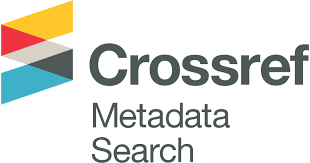Skin Diseases Discover based On Artificial Intelligence
DOI:
https://doi.org/10.58916/jhas.vi.305Keywords:
Artificial intelligence, Deep Learning, Dermatology, skin disease, melanoma.Abstract
Medical research is increasingly focusing on artificial intelligence (AI). The field of dermatology is using this contemporary instrument more and more often. In the practice of healthcare, this will undoubtedly influence and contribute to the future for both patients and providers. It's critical to comprehend how this technology will develop. The application of AI to dermatology is a relatively new development. Because skin diseases involve a wealth of clinical data and images, dermatologists must comprehend AI concepts. This might be the big thing when it comes to using AI in medicine. Studies on skin conditions like onychomycosis, psoriasis, atopic dermatitis, and skin cancer have already been conducted using artificial intelligence. An outline of AI and recent advancements in dermatology is given in this paper. It is crucial to look into both its potential for the future and its current uses. Professionals' attitudes regarding artificial intelligence should be examined because it is recognized as a crucial objective that must be met.
Downloads
References
Cartron AM, Aldana PC, Khachemoune A. Pediatric teledermatology: A review of the literature. Pediatr Dermatol 2021; 38:39-44.
. Havele SA, Fathy R, McMahon P, Murthy AS. Pediatric teledermatology: A retrospective review of 1199 encounters during the COVID-19 pandemic. J Am Acad Dermatol 2022; 87:678-
Esteva A, Kuprel B, Novoa RA, Ko J, Swetter SM, Blau HM, et al. Dermatologist-level classiication of skin cancer with deep neural networks. Nature. 2017; 542:115–8. [PMC free article]
Alpaydin E. Introduction to Machine Learning. Cambridge, MA: MIT Press; 2014.
Gomolin A, Netchiporouk E, Gniadecki R, Litvinov IV. Artificial intelligence applications in dermatology: Where do we stand? Front Med (Lausanne) 2020; 7:100.
Yu K, Syed MN, Bernardis E, Gelfand JM. Machine learning application in the evaluation and management of psoriasis: A systematic review. J Psoriasis Psoriatic Arthritis 2020; 5:147–59.
Eapen BR. ‘Neural network’ algorithm to predict severity in epidermolysis bullosa simplex. Indian J Dermatol Venereol Leprol2005; 71:106–8.
Olsen TG, Jackson BH, Feeser TA, Kent MN, Moad JC, Krishnamurthy S, et al. Diagnostic performance of deep learning algorithms applied to three common diagnoses in dermatopathology. J Pathol Inform 2018; 9:32.
Nichols JA, Herbert Chan HW, Baker MAB. Machine learning: Applications of artificial intelligence to imaging and diagnosis. Biophys Rev 2019; 11:111–8.
Chan S, Reddy V, Myers B, Thibodeaux Q, Brownstone N, Liao W. Machine learning in dermatology: Current applications, opportunities, and limitations. Dermatol Ther (Heidelb) 2020; 10:365–
Potter B, Ronan SG. Computerized dermatopathologic diagnosis. Acad Dermatol 1987; 17:119–31.
Wells A, Patel S, Lee JB, Motaparthi K. Artificial intelligence in dermatopathology: Diagnosis, education, and research. J Cutan Pathol2021; 48:1061–8.
Ianni JD, Soans RE, Sankarapandian S, Chamarthi RV, Ayyagari D, Olsen TG, et al. Tailored for real- world: A whole slide image classification system validated on uncurated multi-site data emulating the prospective pathology workload. Sci Rep 2020; 10:3217.
Jiang Y, Yang M, Wang S, Li X, Sun Y. Emerging role of deep learning-based artificial intelligence in tumor pathology. Cancer Commun (Lond) 2020; 40:154–66.
Nasr-Esfahani E, Samavi S, Karimi N, Soroushmehr SMR, Jafari MH, Ward K, et al. Melanoma detection by analysis of clinical images using convolutional neural network. Conf Proc IEEE Eng Med Biol Soc. 2016; 2016:1373–6.
Fujisawa Y, Otomo Y, Ogata Y, Nakamura Y, Fujita R, Ishitsuka Y, et al. Deep-learning-based, computer-aided classiier developed with a small dataset of clinical images surpasses board-certiied dermatologists in skin tumour diagnosis. Br J Dermatol. 2019; 180:373–81.
Han SS, Kim MS, Lim W, Park GH, Park I, Chang SE. Classiication of the clinical images for benign and malignant cutaneous tumors using a deep learning algorithm. J Invest Dermatol. 2018; 138:1529–38.
Navarrete-Dechent C, Dusza SW, Liopyris K, Marghoob AA, Halpern AC, Marchetti MA. Automated dermatological diagnosis: Hype or reality? J Invest Dermatol. 2018; 138:2277–9. [PMC free article]
Brinker TJ, Hekler A, Enk AH, Berking C, Haferkamp S, Hauschild A, et al. Deep neural networks are superior to dermatologists in melanoma image classiication. Eur J Cancer. 2019; 119:11–7.
Brinker TJ, Hekler A, Enk AH, Klode J, Hauschild A, Berking C, et al. A convolutional neural network trained with dermoscopic images performed on par with 145 dermatologists in a clinical melanoma image classiication task. Eur J Cancer. 2019; 111:148–54.
Brinker TJ, Hekler A, Enk AH, Klode J, Hauschild A, Berking C, et al. Deep learning outperformed 136 of 157 dermatologists in a head-to-head dermoscopic melanoma image classiication task. Eur J Cancer. 2019; 113:47–54.
Brinker TJ, Hekler A, Hauschild A, Berking C, Schilling B, Enk AH, et al. Comparing artiicial intelligence algorithms to 157 German dermatologists: The melanoma classiication benchmark. Eur J Cancer. 2019; 111:30–7.
Chuchu N, Takwoingi Y, Dinnes J, Matin RN, Bassett O, Moreau JF, et al. Smartphone applications for triaging adults with skin lesions that are suspicious for melanoma. Cochrane Database Syst Rev. 2018;2018:CD013192. [PMC free article]
Hekler A, Utikal JS, Enk AH, Berking C, Klode J, Schadendorf D, et networks. Eur J Cancer. 2019; 115:79–83. [PubMed] [Google Scholar] al. Pathologist-level classiication of histopathological melanoma images with deep neural
Hekler A, Utikal JS, Enk AH, Berking C, Klode J, Schadendorf D, et al. Pathologist-level classification of histopathological melanoma images with deep neural networks. Eur J Cancer 2019; 115:79–83.
. Hart SN, Flotte W, Norgan AP, Shah KK, Buchan ZR, Mounajjed T, et al. Classification of melanocytic lesions in selected and whole-slide images via convolutional neural networks. J Pathol Inform 2019; 10:5.
Kulkarni PM, Robinson EJ, Pradhan JS, Gartrell-Corrado RD, Rohr BR, Trager MH, et al. Deep learning based on standard H&E images of primary melanoma tumors identifies patients at risk for visceral recurrence and death. Clin Cancer Res 2020 ;26 :1126–34.
De Logu F, Ugolini F, Maio V, Simi S, Cossu A, Massi D, et al. Recognition of cutaneous melanoma on digitized histopathological slides via artificial intelligence algorithm. Front Oncol 2020; 10:1559.
Gustafson E, Pacheco J, Wehbe F, Silverberg J, Thompson W. A Machine learning algorithm for identifying atopic dermatitis in adults from electronic health records2017 IEEE International Conference on Healthcare Informatics (ICHI) 2017:83–90. [PMC free article]
De Guzman LCD, Maglaque RPC, Torres VMB, Zapido SPA, Cordel MO. Design and evaluation of a multi-model, multi-level artiicial neural network for eczema skin lesion detection 2015 3rd International conference on artiicial intelligence, modelling and simulation (AIMS) 2015:42–7.
Guo P, Luo Y, Mai G, Zhang M, Wang G, Zhao M, et al. Gene expression proile based classiication models of psoriasis. Genomics. 2014; 103:48–55. [PubMed] [Google Scholar]
Shrivastava VK, Londhe ND, Sonawane RS, Suri JS. A novel and robust Bayesian approach for segmentation of psoriasis lesions and its risk stratiication. Comput Methods Programs Biomed. 2017; 150:9–22.
Han SS, Park GH, Lim W, Kim MS, Na JI, Park I, et al. Deep neural networks show an equivalent and often superior performance to dermatologists in onychomycosis diagnosis: Automatic construction of onychomycosis datasets by region-based convolutional deep neural network. PLoS One. 2018;13: e0191493. [PMC free article]
Polesie S, McKee PH, Gardner JM, Gillstedt M, Siarov J, Neittaanmäki N, et al. Attitudes towards artificial intelligence within dermatopathology: An international online survey. Front. Med 2020; 7:591952.
Li CX, Shen CB, Xue K, Shen X, Jing Y, Wang ZY, et al. Artificial intelligence in dermatology: Past, present, and future. Chin Med J(Engl) 2019; 132:2017–20.
Li CX, Shen CB, Xue K, Shen X, Jing Y, Wang ZY, et al. Artiicial intelligence in dermatology: Past, present, and future. Chin Med J. 2019; 132:2017–20. [PMC free article]















